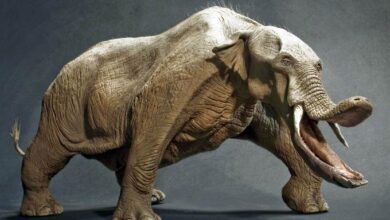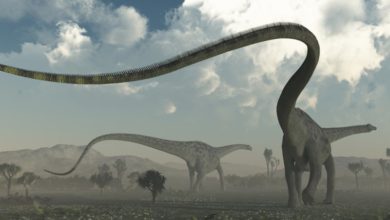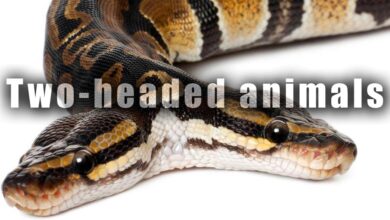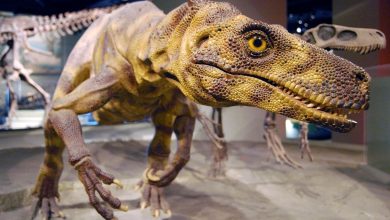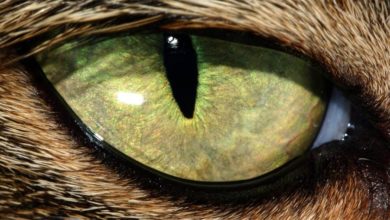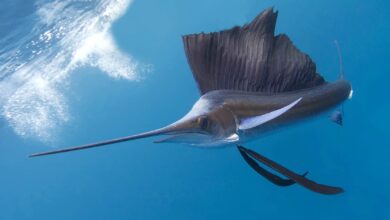The fastest dinosaurs – Hypsilophodon
Hypsilophodon foxii
Hypsilophodon (“high ribbed tooth”) – the ornithopod whose body length was roughly the same as that of a human, was the equivalent of a gazelle among dinosaurs. The small head contained large, sharp eyes and a horned beak with teeth and cheek pockets for storing food. Short front paws ended with five strong fingers, armed with strong claws. Typical for runners are the hind legs, with an elongated shank and metatarsus, supported on three forward-pointing toes with sharp claws.
Hypsilophodon nibbled on the low vegetation in the lush meadows of ferns and horsetails growing in the rivers, lakes and wetlands of the coastal plains that covered much of today’s southern England 120 million years ago.
He would peel the leaves of the fern with his beak, stuff the capacious cheek pockets with them, and then crush them, chewing with great force. Chewing the leaves eventually led to wear of the cheek teeth, but the next teeth grew in their place.
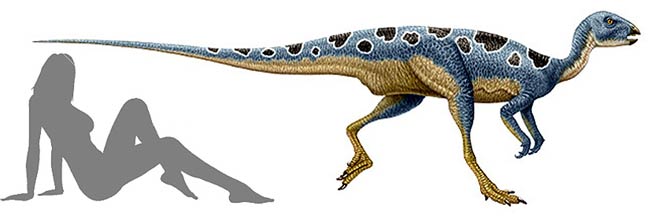
The survival of the timid Hypsilophodon probably depended on group life. On the Isle of Wight, the remains of about 24 Hypsilophodons have been discovered since 1849. Some were found close to each other – possibly falling prey to quicksand. As in the herd of modern antelopes, when most of the animals were grazing with their heads down, a few could look out for threats.
When attacked by a hungry predator, the Hypsilophodons had no choice but to run away in advance. They could also dodge sideways while running to get rid of their pursuers. The long, stiffened tail helped to maintain balance as the animal ran or maneuvered. But without the advantage of a few seconds, even a Hypsilophodon would not have been able to elude the great, fast-running theropods, the remains of which were also discovered on the Isle of Wight.
The first specimen of Hypsilophodon, found in 1849, was initially considered an iguanodon in the eyes of researchers. Only later finds, with well-preserved teeth, convinced scientists that they were dealing with a new kind of dinosaur.
Hypsilophodon reached a speed of about 40 km/hour (25 mph). Earlier studies (now corrected) incorrectly indicated that Hypsilophodon was able to climb trees. Its dimensions and weight were adjusted similarly.
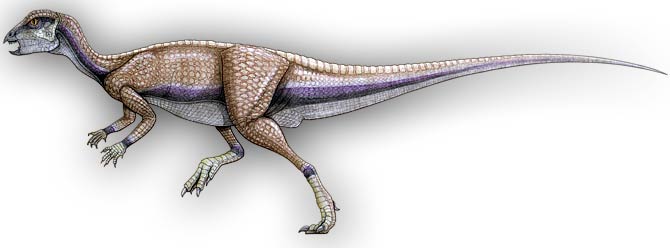
Detailed data / dimension (size)
Hypsilophodon foxii
Size:
- 8 meters (5.9 ft)
- previously thought to be 2.3 – 2.5 meters (7.5 – 8.2 ft)
Weight:
- 20 kg (45 lbs)
- previously it was believed that even 80 kg (176 lb)
Speed:
- 40 km/hour (25 mph).
Lived:
- 130-125 million years ago (Early Cretaceous)
Food:
- low vegetation
Occurrence:
- England, Spain, USA (South Dakota)
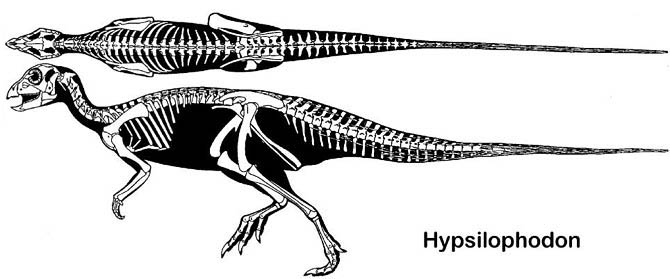
Classification:
- Kingdom: Animalia
- Phylum: Chordata
- Clade: Dinosauria
- Order: †Ornithischia
- Clade: †Neornithischia
- Genus: †Hypsilophodon
- Species: † Hypsilophodon foxii
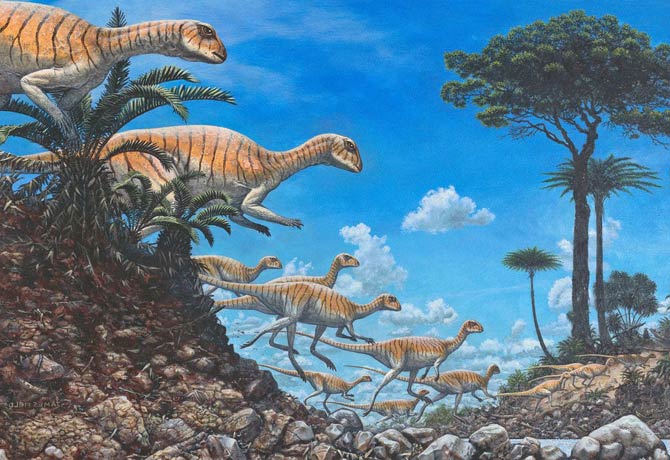
Recommended
- The longest dinosaurs. Sauropods Top 10
- The heaviest dinosaurs – Top 10
- The longest predatory dinosaurs. Theropods Top 10
- The heaviest predatory dinosaurs Top 10
- The longest Ornithischians (Ornithischia) TOP 10
- The heaviest Ornithischians Top 10
- The largest raptors (dromaeosaurs) Top 10
- The heaviest Dromaeosaurids / dromaeosaurs – Top 10
- The longest Ankylosaurus Top 10
- The heaviest Ankylosaurus Top 10
- The longest ceratopsians
- The heaviest cerapsians
- The longest and largest ornithopods
- The heaviest ornithopods Top 10
- The longest Stegosaurians (Stegosauria) TOP 10
- The heaviest Stegosaurians (Stegosauria) Top 10
- The smallest sauropods Top 10
- The smallest dinosaurs Top 10
- The largest pterosaurs Top 10
- Dinosaurs
- Dinosaurs database
- Predatory dinosaurs
- Animals & dinosaurs records
- The fastest animals – Top 100
- The fastest birds – Top 10



